Affiliate links on Android Authority may earn us a commission. Learn more.
The Best of Android: Mid-2020 — Which phone has the best display?
Published onJuly 13, 2020
Timeless smartphones start with a great display. After all, we interact with our phone screens just about every time we use them. 2020 has seen the trend in high-refresh 90Hz and 120Hz displays become mainstream, further differentiating premium from budget and mid-tier handsets. At the same time, high-quality OLED panels have become more affordable, making it more affordable than ever to own a phone with what was once premium-tier technology.
Display quality has been at the heart of smartphone improvements this year, and we have high expectations for the capabilities of this year’s handsets. Which 2020 smartphone, so far, offers the very best display quality? Join us as we dig through the science to crown the Best of Android Mid-2020 display winner.
Editor’s note: If you’re wondering why your favorite phone isn’t on this list, keep in mind only phones released in the first half of 2020 are here. 2019 phones and phones released after the end of H1 2020 are not eligible.
What and why we test
At review time, we meticulously test a wide range of smartphone attributes. When it comes to displays, we look at several facets to build up a picture of overall display quality. Pixel density and resolution for image clarity and sharpness play a small part, although today’s 6-inch displays with FHD+ resolutions already push the limits of human perception anyway. Clarity is, essentially, a solved issue these days.
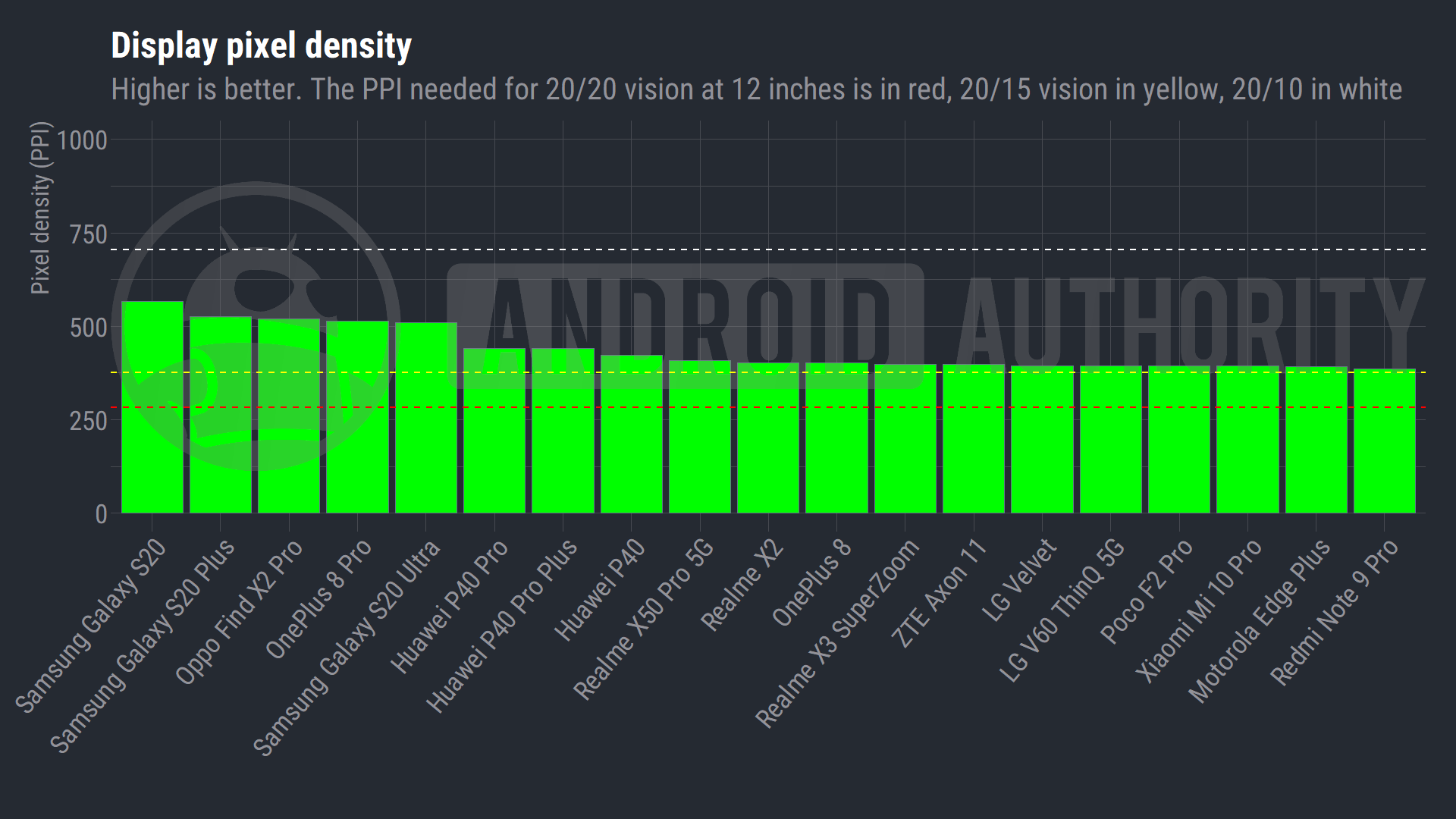
More importantly, we examine color accuracy by looking at the color error (measured in deltaE2000) across the display’s color space, as well as the white point color temperature. Fewer and smaller errors make for a more realistic viewing experience with no noticeable tint. We’re expecting big improvements in this area following the high-bar set by last year’s Google Pixel 4.
We also examine gamma to ensure a smooth transition from deep blacks and greys to white highlights. 90Hz and 120Hz refresh rates don’t affect image quality, but they do make apps and games feel more responsive. There are bonus points on offer for the added smoothness, but for us, traditional image quality and accuracy come first.
For most of today’s comparisons, phones go head-to-head with their display brightness set to 200 nits — a typical indoor viewing brightness.
The results
Overall, 2020 is a good year to pick up a smartphone with a solid display. There are plenty of options for great-looking panels with exceptional color accuracy in the DCI-P3 color space, which fills much more of the visible spectrum than the old sRGB standard. However, it’s mostly the familiar names that offer the very best mobile displays, including HUAWEI, LG, OnePlus, and Samsung — even in their more affordable flagship models. To differentiate many of these products, we need to look beyond color to gamma, peak brightness, and sustainable high refresh rates.
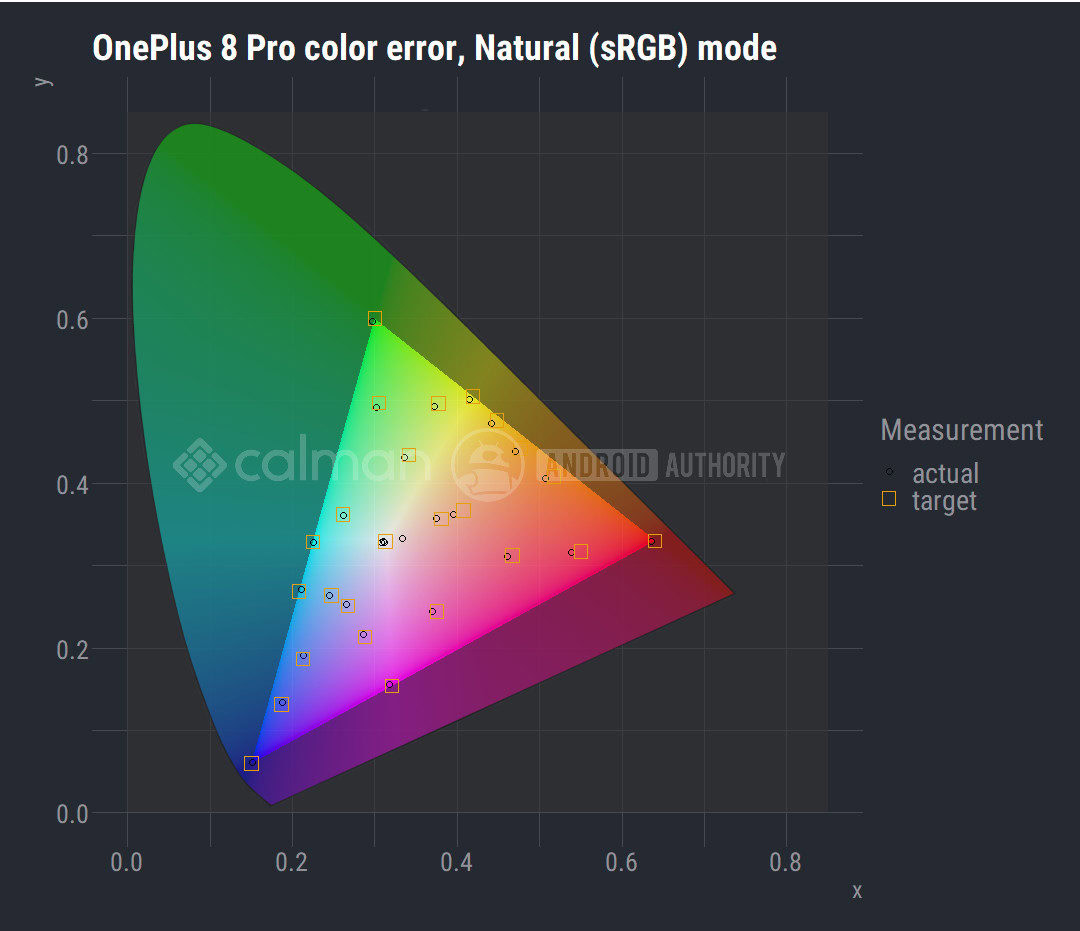
That said, you won’t find many of the affordable Chinese flagships competing for the Best of Android display crown this year. Handsets like the realme X3 SuperZoom, realme X50 Pro 5G, and POCO F2 Pro offer flagship-tier performance, but keep their bill of materials low with more cost-effective displays. They offer passable to decent quality, but this is definitely something to be mindful of when eyeballing the spec-sheets of the industry’s “flagship killers.”
Best of Android Mid-2020 display winner: OnePlus 8 Pro
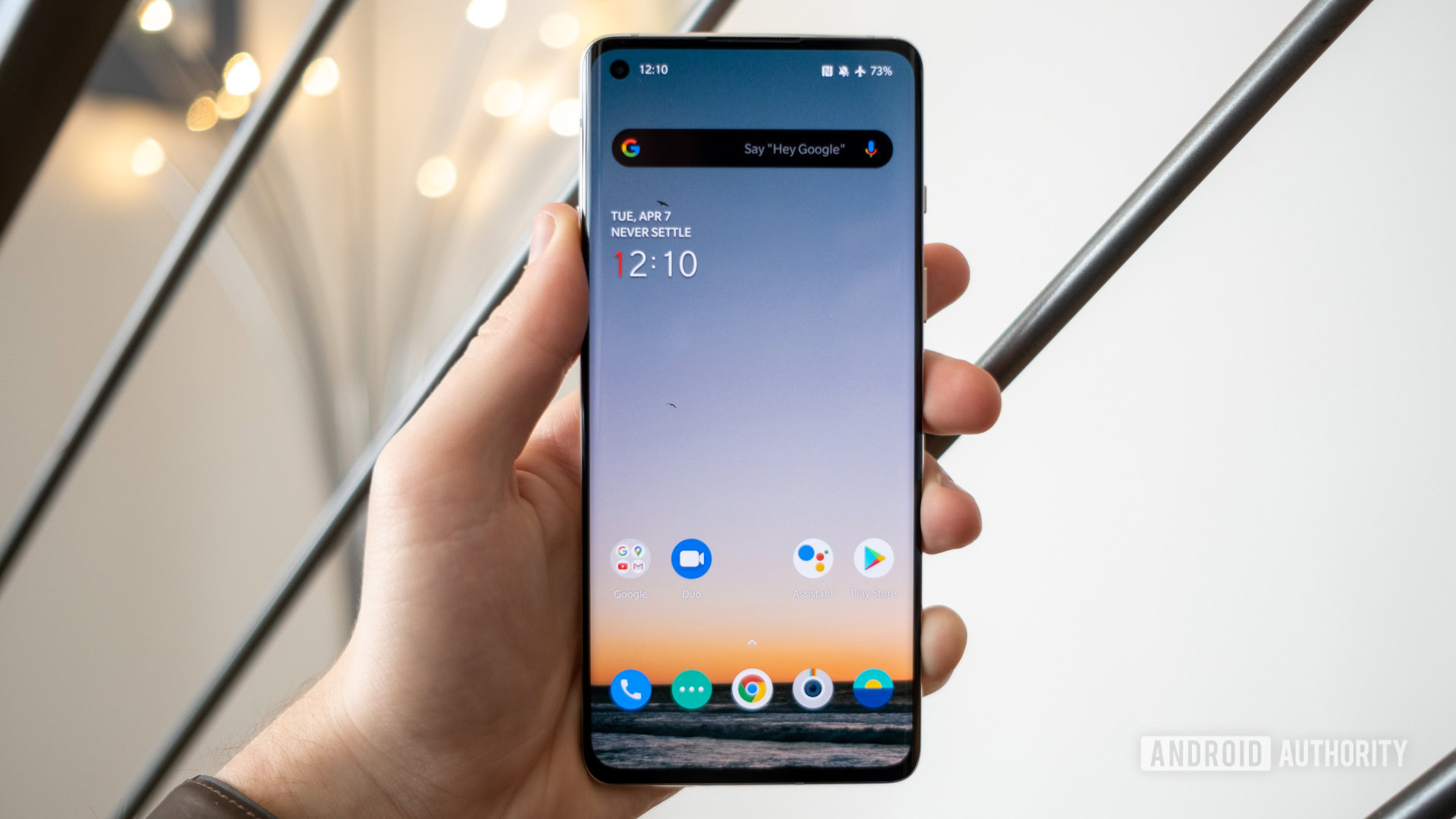
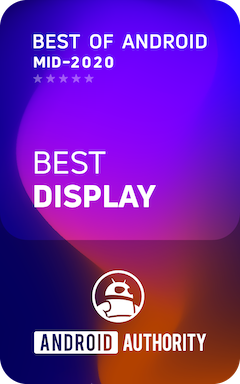
Further reading: OnePlus 8 Pro review: What the 7T Pro should have been
At review time, we noted that the OnePlus 8 Pro offers the best smartphone display available. The phone has held onto that lead against some stiff competition.
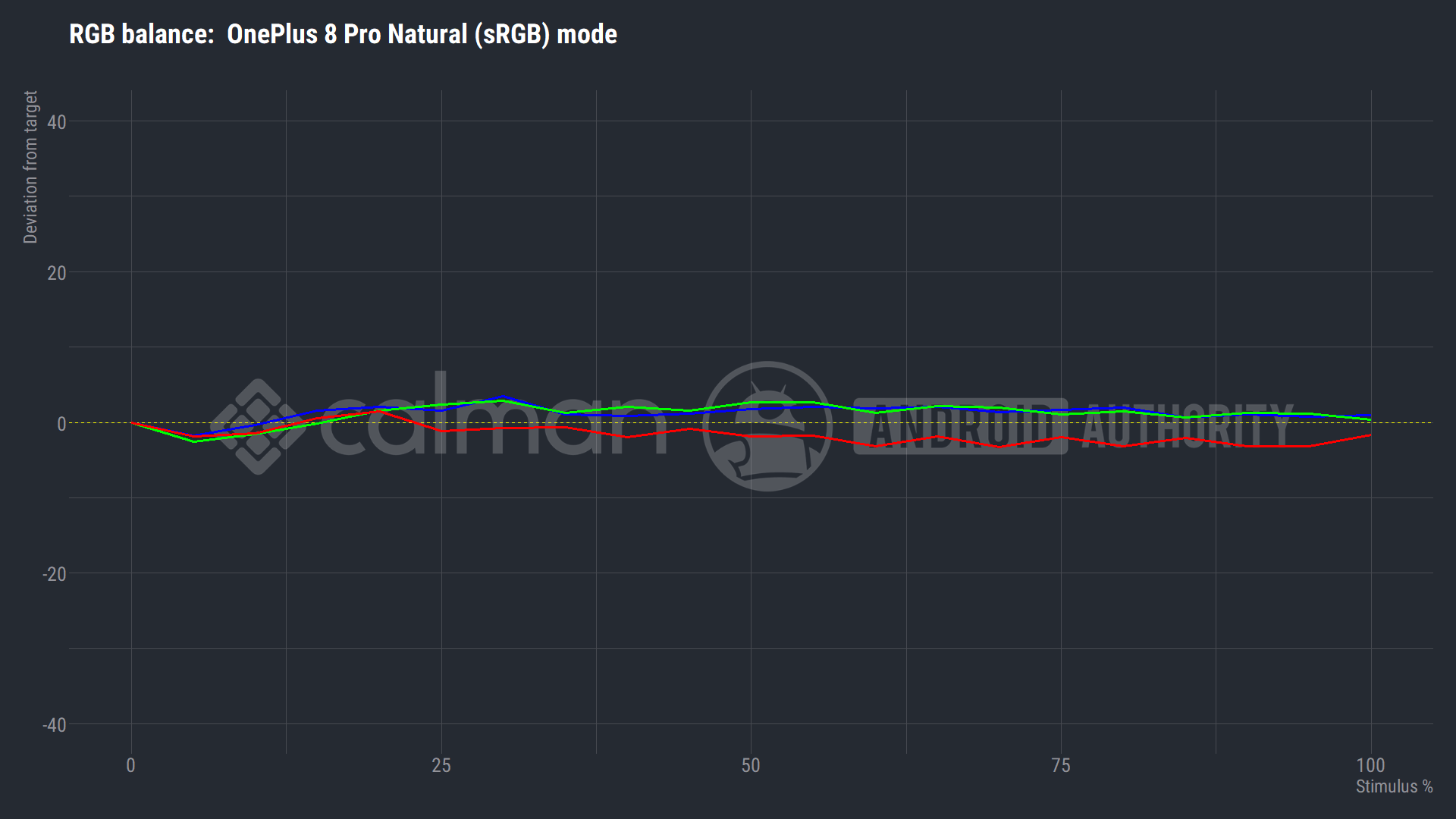
The OnePlus 8 Pro offers an exceptionally low average color deltaE2000 of 2.86 in its default display mode. This puts it very close to the threshold where it’s difficult to see screen errors (deltaE2000 2.0) and well into the region of very high performance. This is due to additional calibration that OnePlus performed on its Samsung AMOLED panel, surpassing the default factory settings. The OnePlus 8 Pro also benefits a white balance that’s neither too warm nor cold. OnePlus has really done an exceptional job with the 8 Pro’s display. It’s not perfect though; the display’s gamma curve isn’t ideal, deviating substantially with dark blacks and highlights.
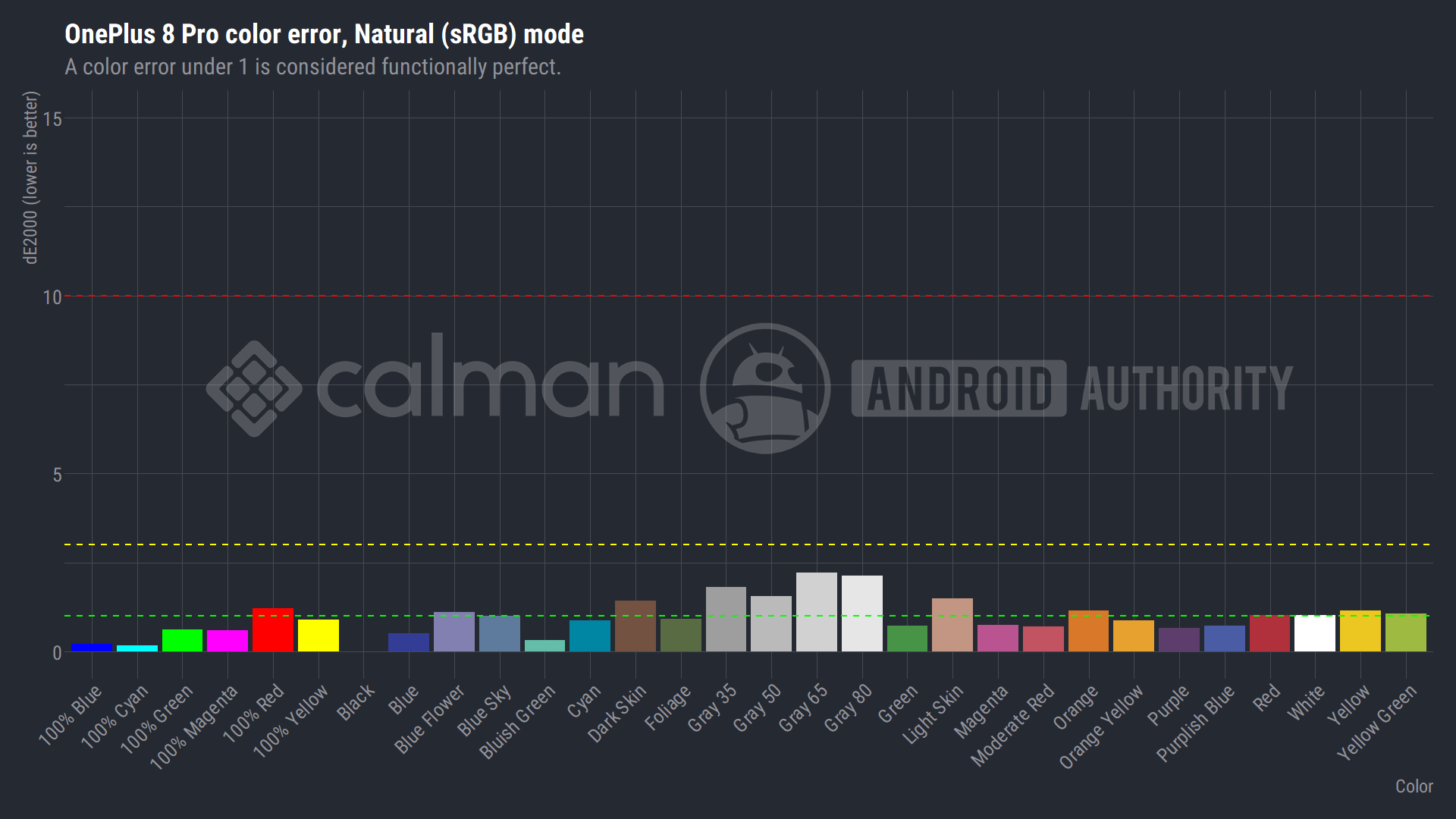
Even more accurate results can be obtained from the phone’s “natural” color setting. Although, again, the gamma curve isn’t flawless with dark greys. Overall color accuracy is great in this setting with an incredible average deltaE of 0.92. Only a handful of colors post an error above 2.0, so in theory it’s unlikely you’ll notice them.
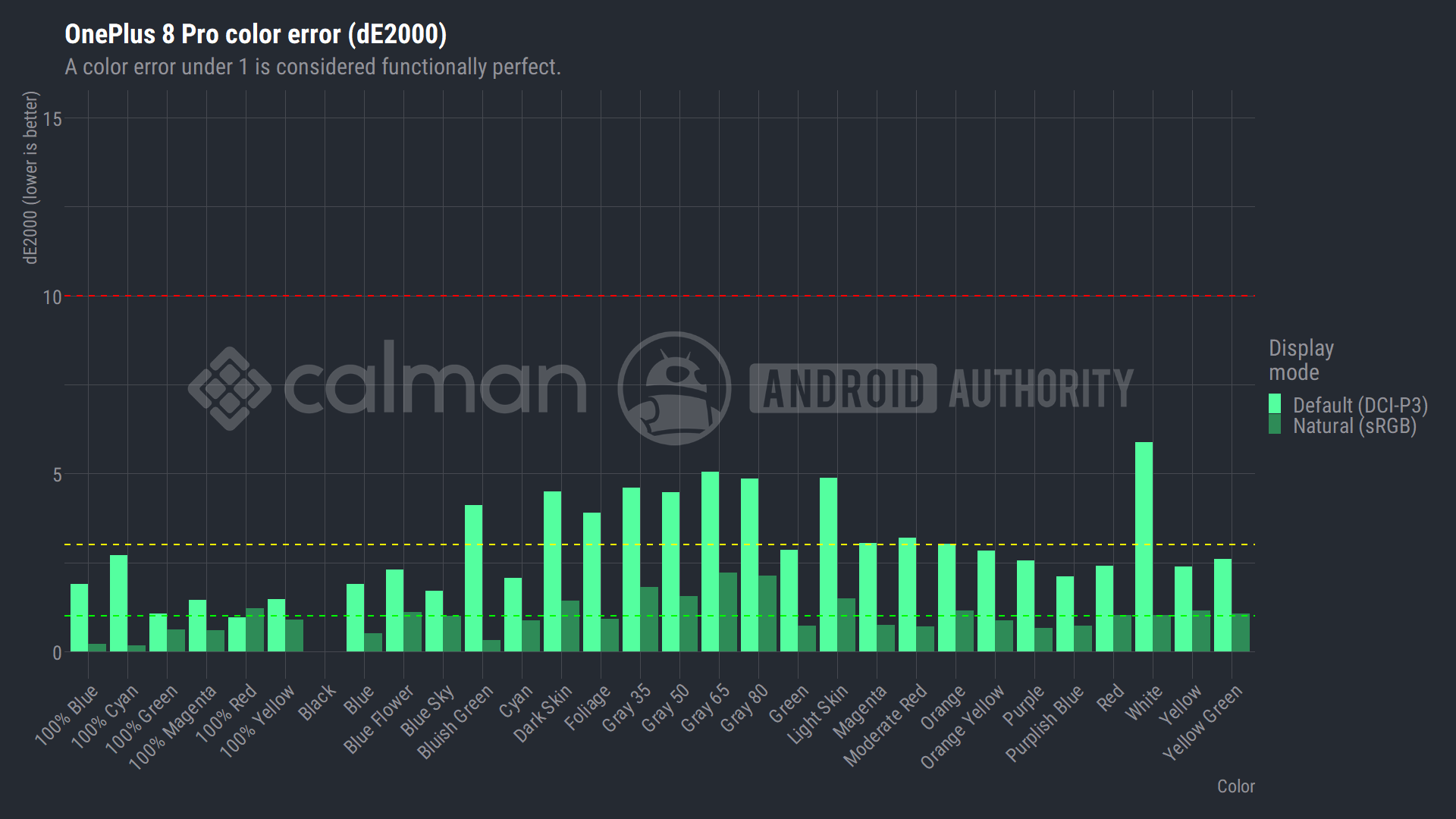
Most people will probably keep the default settings enabled on the OnePlus 8 Pro, as the DCI-P3 color gamut is much wider and vivacious than sRGB is. Sticklers for image accuracy may elect to enable the narrower colorspace for its benefits in RGB balance, gamma accuracy, and low color shift across the greyscale.
The OnePlus 8 Pro has a fabulous display with excellent colors, but there's still room for improvement with next-gen tech.
OnePlus’ 2020 flagship offers a number of other important display features. A peak brightness of 820 nits surpasses the requirements for outdoor visibility and is a boon for watching HDR content. The phone sports a 120Hz refresh rate that can be left on all the time thanks to a dedicated Pixelworks Iris 5 display processor. This handles frame rate upscaling and color management with very low power consumption. Other flagships, such as the Samsung Galaxy S20 series, can’t leave their high refresh rate displays enabled constantly for fear of draining the battery.
Runners up and worthy mentions
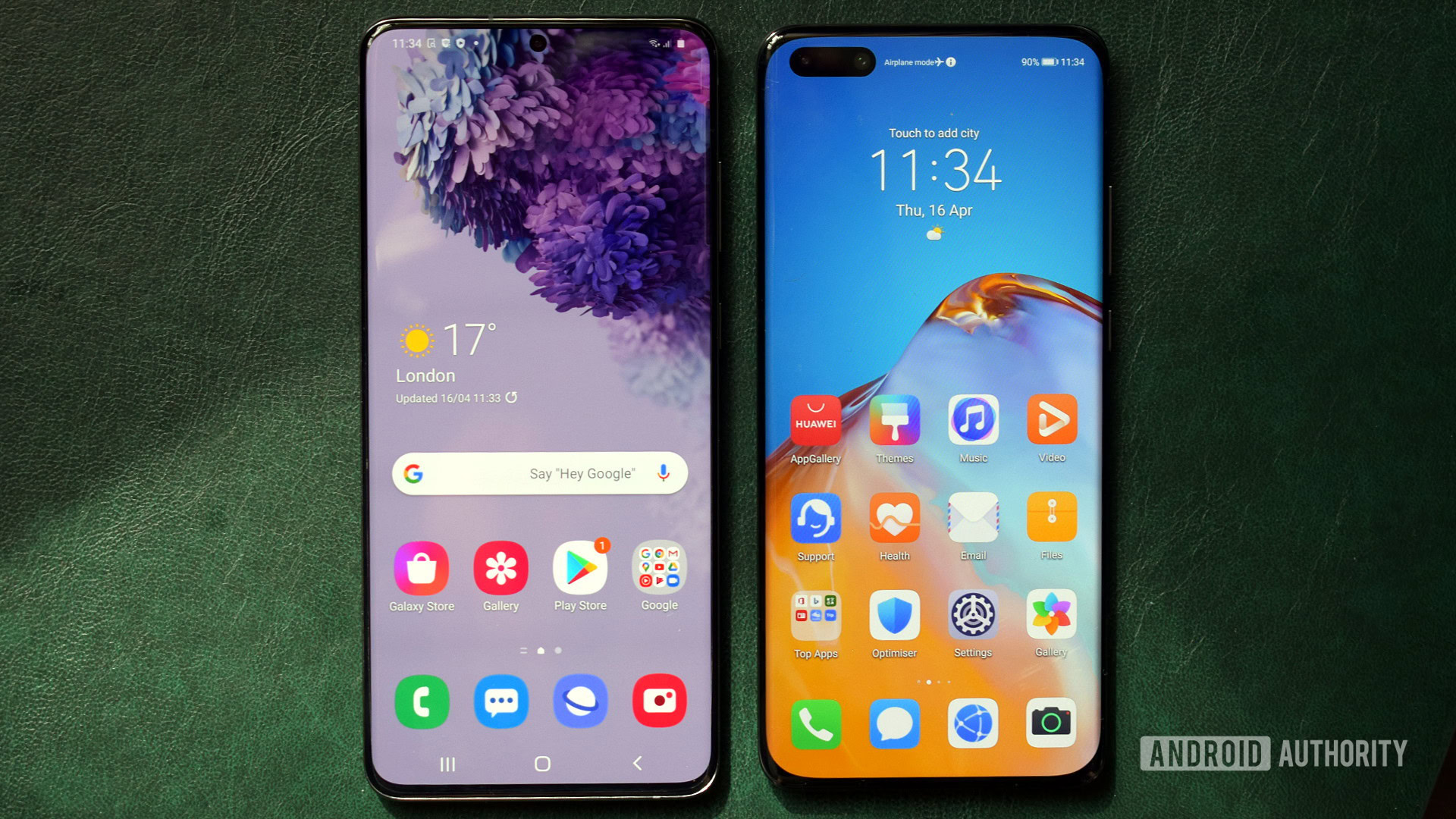
Second place for Best of Android: Mid-2020 display goes to the Samsung Galaxy S20 series, followed by the HUAWEI P40 range in third place.
We’ve come to expect display excellence from Samsung Display’s AMOLED technology, so it’s not surprising to see 2020’s Galaxy S20, S20 Plus, and S20 Ultra flagships hand in great display results. Samsung’s range doesn’t quite keep up with the OnePlus 8 Pro’s color accuracy, hovering just north of deltaE 4.0. However, Samsung’s flagships offer good white balance, 700+ nit peak brightness for outdoor viewing, and a smooth gamma curve.
The Samsung Galaxy S20 range also offers a 120Hz refresh rate for a smoother UI experience. However, this isn’t enabled out of the box and has a notably negative effect on the phone’s battery life. It’s a blemish on an otherwise obviously flagship-tier display.
Read on: Not all 120Hz smartphone displays are made equally — here’s why
Huawei’s P40 series delivers highly competitive color and gamma accuracy scores just like the Samsung Galaxy S20. These displays certainly look very good too. However, the P40 and P40 Pro are less suited for HDR content and outdoor viewing, owing to their sub-600 nit peak brightness.
The P40 series also sport 90Hz displays that help to improve smoothness. However, this mode is dynamic and doesn’t run on every app, and there’s no way to enforce a lock to 90Hz.
The regular OnePlus 8 and LG Velvet deserve an honorable mention here as well. Both provide very impressive color accuracy that actually surpasses the Galaxy S20 and HUAWEI P40 series handsets. Sadly, the Velvet is let down by its limited peak brightness, while the OnePlus 8 doesn’t quite keep up with the resolution clarity of the industry’s very best. Even so, both of these phones look great and cost a little bit less than our first, second, and third place winners too.
More from Best of Android: Mid-2020
Revisit the Best of Android: Mid-2020 awards for each category: